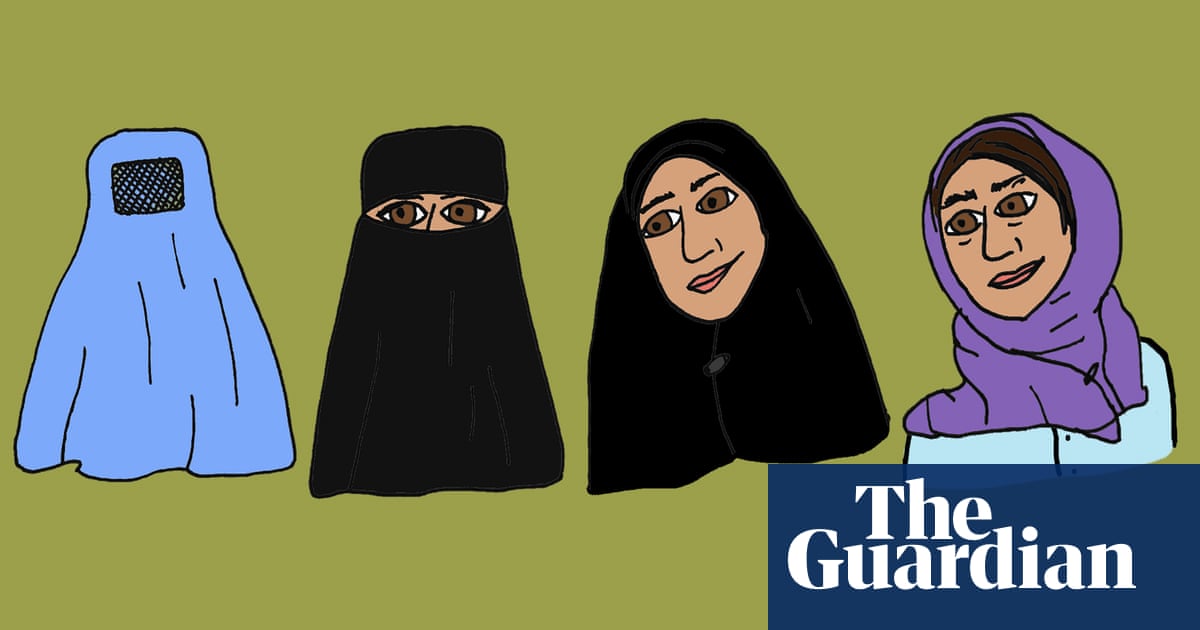If you’ve seen a hijab on a screen – animated or otherwise – it’s likely that this Islamic head covering was one specific style.
Think Princess Jasmine in the 1992 movie Aladdin, Claire Danes in the series Homeland, or the Zamins in the animated show The Proud Family:
In these fictional worlds, there’s typically a little hair poking out of a shawl that can be quickly slipped off. And people really do wear the hijab that way. But it exists in so many more iterations than this one particular style. There’s a whole world of choices between a niqab and nothing:
The way that the hijab is depicted matters. Not just for the half a billion people in the world who wear them, but for all Muslims, because this head covering has been a target forIslamophobiafrom France to the US. And since the right tends to conflate religion, race and culture, the hijab has also become a target of growing anti-Arab sentiment too.
When I was commissioned to create a hijabi character forRamy Youssefand Pam Brady’s animated TV show #1 Happy Family USA, I thought a lot about how to draw it. This was the first time a main character in a US animated series would be shown wearing a headscarf and I wanted to get it right.
Hijabis don’t usually wear their headscarves when they’re in private spaces with family members. I thought about what the mother character, Sharia, would look like at home and outside of the house. The designs shouldn’t be totally separate. She’s still got a certain taste in color and comfort. Outdoors, her clothes are also part of her hijab. Sharia chooses to wear loose items that cover most of her body. Indoors, I wanted to be able to see this character’s sexuality without sexualizing her (unlike most in adult animations, this female lead doesn’t have thin thighs and a squeezed waist).
But another character in the show, Sharia’s mom, plays by her own rules. When her son-in-law suggests she takes off her niqab face covering to better blend into the community, Grandma objects. She won’t have a man tell her what to do! Ever! She even wears the niqab indoors as a feminist “fuck you” to the racist, Islamophobic world around her. Only her slippers change from the inside world to the outside world.
And then there’s the show’s teenage daughter, who doesn’t wear the headscarf and has never been asked to by anyone in her family (this was my experience too). Three generations of women, three different choices about what to do with their bodies. But how to get those depictions right?
First of all, how can you show that this fabric is often light and thin, not the bulky, cumbersome material often depicted in cartoons?
And then how can you go beyond bland colors to show that there can be personal expression in wearing hijab?
The hijab looks different from the right profile and the left:
And because it’s covering hair, that should be reflected in the shape. Most on-screen hijabs weirdly follow the shape of a skull, without considering the bun or ponytail that is often underneath the fabric.
And then there’s the fun of animation. The hijab has to move. Just like any other item of clothing.
The character shouldn’t simply ignore their hijab. How they use it is a part of their character. Do they adjust it when they’re nervous, sleepy or feeling especially proud of themselves?
And they should use it, too! To make a hands-free call, shield themselves from a fart or polish their glasses.
For Sharia and so many others, the hijab isn’t just an outward expression of inner values. It’s as practical and fashionable an item of clothing as any other. It deserves to be depicted as such.
Special thanks to Kendra Melton who contributed to character design and development for the show
